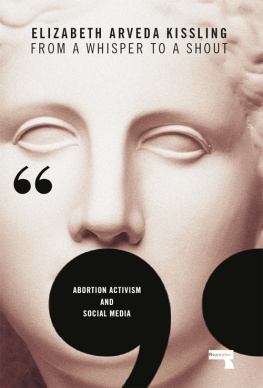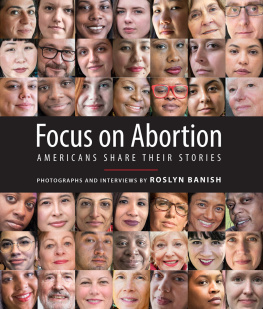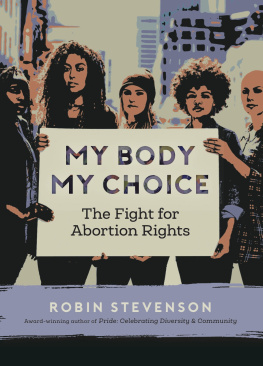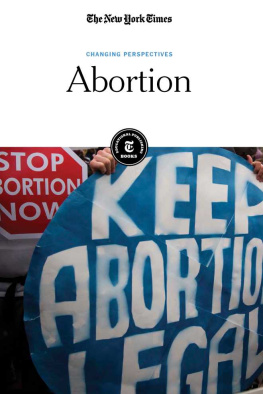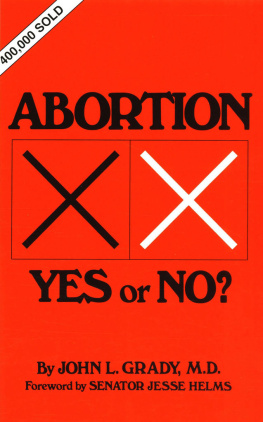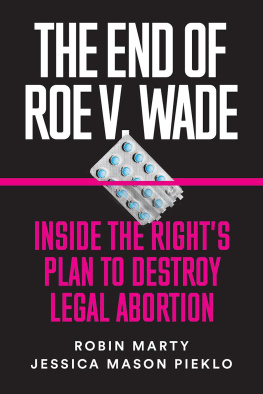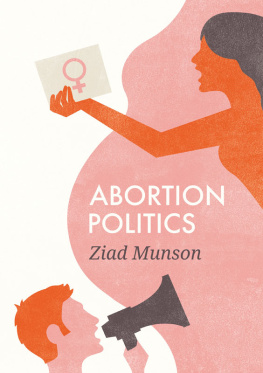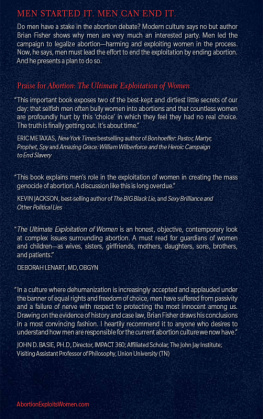FROM A WHISPER TO A SHOUT
FROM A WHISPER TO A SHOUT
Abortion Activism and Social Media
Elizabeth Arveda Kissling
This book is dedicated to everyone who
ever talked about their abortion.
Abortion Stigma
From a Whisper to a Shout
Abortion. Can we finally stop whispering about it?
Abortion has been around almost as long as pregnancy. Historical records show separate references to abortion techniques as long ago as 3000 years BCE in Egypt, Greece, and China, and major world religions did not forbid it.
The history of abortion in the US, as a secular society, is mostly the history of its regulation. Pregnancy termination was widely practiced but completely unregulated in the eighteenth and early nineteenth centuries. An induced abortion before quickening wasnt even considered an abortion but a pregnancy that had slipped away.
The American Medical Association (AMA) was formed in 1847 and provided physicians with an infrastructure from which to organize an anti-abortion campaign.
By 1890 abortion was criminalized in every state, although it wasnt treated exactly the same in each. In some places it was permitted only when necessary to save the life of the woman, while in other areas women could receive an abortion in a doctors office or even at home. The latter practice ended in the mid-twentieth century as new methods of controlling abortion were implemented by medical and legal authorities.
The first activists to advocate for abortion access in terms of womens rights, Patricia Maginnis, Lana Phelan, and Rowena Gurner, came together in California in the early 1960s first Maginnis and Gurner in 1961, with Phelan joining in 1965. The group they formed, the Society for Humane Abortion (SHA), worked tirelessly for more than a decade to educate the public about the issues. They delivered presentations about abortion at conferences and in classes, and in 1969 published the satirical guide The Abortion Handbook for Responsible Women. To maintain SHAs tax-exempt status, they created a second group, Association for the Repeal of Abortion Laws (ARAL), which eventually grew into the National Association for the Repeal of Abortion Laws (NARAL). After the 1973 US Supreme Court decision legalizing abortion, the groups new leadership shifted its focus to keeping abortion safe and legal and changed its name to National Abortion Rights Action League (still NARAL). Its surely no coincidence that the new name completely omitted the word abortion.
Several US states revoked criminalization of abortion and allowed termination of pregnancy before twenty weeks in 1970: first Hawaii, then New York, Alaska, and Washington. in the country to make a decision to end a pregnancy in the first two trimesters, for any reason.
It must be recognized, however, that Roe was decided on the basis of the right to privacy, grounded in the Fourteenth Amendment and judicial precedent, not on the basis of equality.
Abortion opponents soon began working to limit abortion access, and in 1976 Congress passed Illinois representative Henry Hydes proposed prohibition of Medicaid funds for abortion for indigent women. The constitutionality of the Hyde Amendment has been upheld repeatedly, even its prohibition of medically necessary abortion.
In the forty-four years since the 1973 Supreme Court ruling, individual states have enacted 1,074 abortion restrictions. Of these, 353 (27%) have been enacted just since 2010. Restrictions include mandating medically inaccurate or misleading counselling prior to the procedure; requiring a waiting period after abortion counselling, thus necessitating at least two trips to the facility; mandating a medically unnecessary ultrasound exam before an abortion; banning Medicaid funding of abortion (except in cases of life endangerment, rape or incest); restricting abortion coverage in private health-insurance plans; requiring onerous and unnecessary regulations on abortion facilities; imposing medically inappropriate restrictions on medication abortion; and imposing an unconstitutional ban on abortion before viability or limits on abortion after viability. In this climate, talking about abortion is ever more important to break abortion stigma and to keep abortion safe, legal, and accessible, abortion must be visible. Instead, abortion has been increasingly stigmatized and shamed since Roe v. Wade was decided.
Any serious examination of the phenomenon of stigma must begin with Erving Goffmans classic essay, Stigma: Notes on the Management of Spoiled Identity (1963). This text initiated and to a great extent still defines the study of stigma. Within the first few pages, Goffman offers a simple definition of stigma as a term used to refer to an attribute that is deeply discrediting,
Not all subsequent scholars of stigma have maintained Goffmans interactional emphasis. This interactional focus is critical with respect to abortion stigma, however, for it determines how to challenge and transform stigma. Health researchers Link and Phelan (2001) outline a widely cited sociological approach that redefines stigma as contingent on inequities in social, economic, and political power. Stigma occurs when four components converge:
1. People distinguish differences from one another and label those differences.
2. The labelled persons are associated with negative stereotypes in dominant cultural beliefs; these cultural biases may be implicit.
3. The labelled persons are perceived as distinctly Other.
4. Once the labelled persons are Other, they experience loss of status and discrimination.
More succinctly, stigma can be redefined as the co-occurrence of labelling, stereotyping, status loss, and discrimination in a context in which power is exercised. Link and Phelan reiterate the importance of social, economic, and political power in this definition, for it requires power to stigmatize. Some stigmas and some power differentials are so taken for granted that they are often overlooked. This can happen easily with abortion stigma, as the stigmatized may accept their place in the stigma discourse without question much as some women accept a lower status position in a patriarchal culture. Like the position of women in society, abortion stigma is culturally variable and culturally specific. Kumar et al. (2009) point out that it is possible for abortion to occur without stigma and name the example of Cameroon, where it is more shameful to become a mother when one is unprepared or unready than it is to terminate a pregnancy.
In research specifically on abortion stigma, the interactional nature is emphasized even though abortion stigma is seldom visible. As even Goffman noted, the term is applied more to the disgrace itself than to the bodily evidence of it. This seems especially relevant to the US context, where abortion is highly stigmatized and highly politicized.
Kumar et al.s extensive database search for abortion stigma in international media sources in seven languages, which resulted in 428 hits across forty-two countries, found the concept widely used and recognized but no research on the origins or mechanics of abortion stigma itself. Then it becomes easy for Link and Phelans second stage, association with negative cultural stereotypes, to apply. Once women who abort are so marked, they achieve the third stage of stigma, being perceived as different and Other. The fourth and final stage is overt discrimination, which can be manifested interpersonally by verbal or physical abuse, expulsion from school or employment, public shaming, and so on. In the US it is currently manifested in some states by policies that do not apply to other medical procedures, such as excessive waiting periods, provision of inaccurate medical information, and denial of insurance coverage, discussed in more detail below.
Next page

